The week at a glance
- Sandhill Crane and Black Scoter in Aberdeenshire
- Semipalmated Plover in County Kerry and a possible in Gloucestershire
- Solitary Sandpiper and Northern Waterthrush still on the Isles of Scilly
- Hudsonian Whimbrel and House Crow still in County Cork
- American Black Tern still in Lincolnshire
- Buff-bellied Pipits in Orkney and Shetland
- Swainson's Thrush and Yellow-breasted Bunting in Shetland
After last week's run of records of probable Sandhill Crane, it was perhaps only a matter of time before it settled long enough to be confirmed. Despite the previous reports from both Northumberland and Norfolk, it chose to settle in Aberdeenshire, where it commuted between a roost site at Loch of Strathbeg and fields at St Combs on 22nd–26th. There are just four previous records of this long-distance migrant: a bird in County Cork in September 1905, others in Shetland in April 1981 and September 1991, and the Orkney bird of September 2009 that was later followed down through Highland. The latest bird also gave some the incentive to make the short trip over to the coast to see the drake Black Scoter, which remained off Blackdog and Murcar Golf Course to at least 25th in the company of one Surf Scoter.
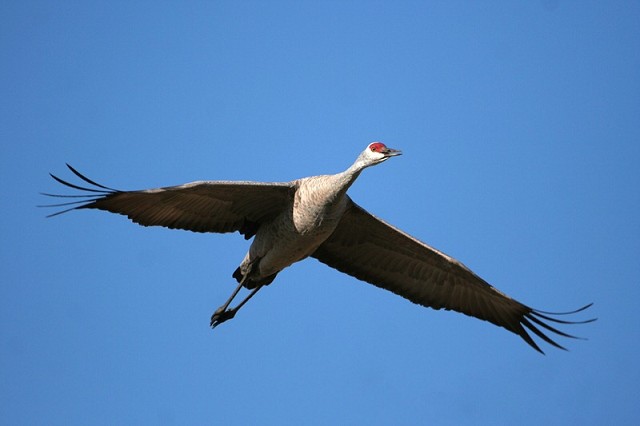
Sandhill Crane, St. Combs, Aberdeenshire (Photo: Wayne Gillatt)
Sandhill Crane, St. Combs, Aberdeenshire (Video: FoghornsBirdingVideo)
One of the best finds of the autumn, though, was in Ireland, where the efforts of the 'Punkbirders' were rewarded with the finding of a juvenile Semipalmated Plover on the beach at Ventry (Kerry) on 24th–28th. This is a species that really should be picked up more frequently than it is, but incredible amounts of patience are needed to check consistently through flocks of Ringed Plovers for this vagrant. A slight difference in jizz, a distinctive call and a faint LRP eye-ring are the stand-out features, so this will never be an easy find. This is just the fourth record, following birds on Scilly for a month in autumn 1978, one at Dawlish Warren (Dorset) in the summers of 1997/98 and one in Donegal in October 2003. Interestingly, there was also a possible at Slimbridge (Glos) on 27th–28th though, despite being photographed, it refused to call so has yet to be confirmed.

Semipalmated Plover, Ventry, Kerry (Photo: Dermot Breen)
On the Isles of Scilly, the Solitary Sandpiper and Northern Waterthrush remained on St Mary's, both frequenting Higgo's Project Pool at the same time on occasion, with a none-too-shabby supporting cast of Red-eyed Vireo and Lesser Yellowlegs. The waterthrush remained a morning and evening bird, though, and those twitching by boat were often faced with a fruitless search of the impenetrable Lower Moors area. A second Solitary Sandpiper was also found, at St Ouen's Pond (Jersey) on 26th–28th, along with three Pectoral Sandpipers. This is the first record of Solitary Sandpiper for Jersey; there is just one previous Channel Islands record, from Guernsey in 1997.
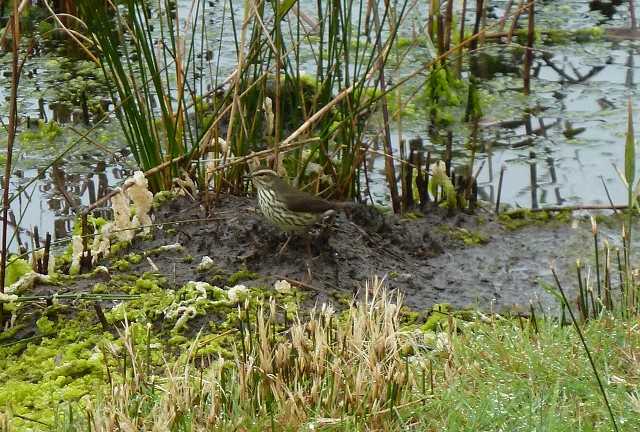
Northern Waterthrush, St. Mary's, Isles of Scilly (Photo: Rob Sandham)
Lesser Yellowlegs and Northern Waterthrush, St. Mary's, Isles of Scilly (Video: benjimi1)
Back in Ireland, the Hudsonian Whimbrel remained at Three Castles Head (Cork) to 25th. The Lincolnshire American Black Tern also remained at Covenham Reservoir all week, showing well at times.
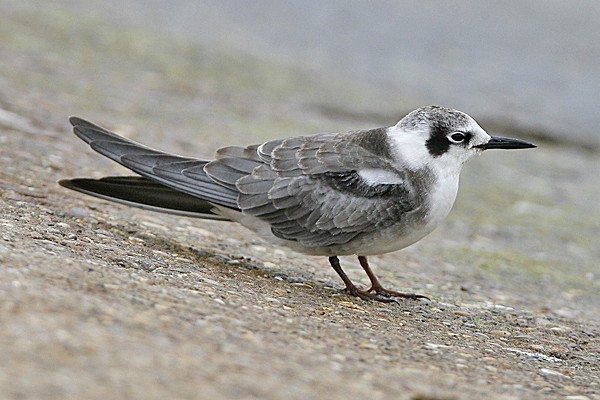
American Black Tern, Covenham Reservoir, Lincolnshire (Photo: Rob Wilson)
Hot on the heels of the autumn's first Buff-bellied Pipit were more accessible individuals this week. Two were together on North Ronaldsay (Orkney) on 22nd–24th, one remaining to 26th. The island also held two Citrine Wagtails on 23rd–25th, Short-toed Lark, American Golden Plover, Pectoral Sandpiper, Buff-breasted Sandpiper, three Yellow-browed Warblers, Barred Warbler, Common Rosefinch, 34 Lapland Buntings and 60 Snow Buntings. There was a further Buff-bellied Pipit on Foula (Shetland) on 22nd–26th, and the island also saw the first Yellow-breasted Bunting of the autumn, a juvenile on 25th–26th, a mystery crake on 22nd, a Least Sandpiper on 23rd and up to four Yellow-browed Warblers.

Buff-bellied Pipit, North Ronaldsay, Orkney (Photo: Paul A Brown)
On Shetland, the Swainson's Thrush remained at Boddam to 23rd, though the bird originally reported as a Hermit Thrush at Tresta (Fetlar) on 22nd was later reidentified as a Grey-cheeked Thrush. It stayed to 24th, and is the sixth for the islands.

Swainson's Thrush, Boddam, Mainland, Shetland (Photo: Duncan Watson)

Gray-cheeked Thrush, Tresta, Fetlar, Shetland (Photo: Dougie Preston)
The four Snow Geese remained with Pink-feet at East Chevington (Northumberland) all week, and further north there were also three at Blackdog (Aberdeenshire) on 25th and one at Borve, Lewis (Outer Hebrides) on 27th. Two reported at Monk's House (Northumberland) on 26th were reidentified as Ross's Geese on 28th. Two Ruddy Shelducks at Campfield Marsh (Lancs) on 21st–24th were new in, also being seen at Cardurnock on 25th, and two were at Baston & Langtoft Pit (Lincs) on 28th. A Cackling Canada Goose at Carr Mill Dam (Lancs) on 26th–27th was presumed to be an escape.
The two drake American Wigeon both remained, at Wellington Gravel Pits (Herefordshire) to 26th and Loch Bee, South Uist (Outer Hebrides) to 27th, with an eclipse drake also at Idle Valley NR (Notts) on 28th. The eclipse drake Blue-winged Teal also remained at Saltholme (Cleveland) all week. There were also two new birds, both females, at Bull Island (Dublin) on 24th–27th and Inch Island Lake (Donegal) on 24th–25th. The only Ring-necked Duck record came from Chew Valley Lake (Somerset), where it and the drake Ferruginous Duck remained all week, alongside a drake Ferruginous Duck × Pochard hybrid, a Pectoral Sandpiper and 21 Black Terns. Other drake Ferruginous Ducks were at Lake Lothing (Suffolk) on 26th and Pitsford Reservoir (Northants) on 28th.
In Ireland, the drake Black Duck remained at Achill Island (Mayo) along with at least two female hybrids, one more convincing as the real deal than the other. In Scotland, an immature drake King Eider was in Burghead Bay (Moray & Nairn) on 23rd–25th and an adult drake Surf Scoter was at Urafirth (Shetland) on 28th.
There were very few reports of big shearwaters this week: a single Cory's past Porthgwarra (Cornwall) on 22nd and 23rd and just one Great Shearwater, past Helvick Head (Waterford) on 25th. In the east, the only seabird of real note was a Pterodroma petrel that slipped past Cley Marshes (Norfolk) on 27th, evading identification. There were fewer records of Balearic Shearwaters this week, but good numbers passed Porthgwarra (Cornwall), including 202 on 24th and 150 on 26th. In the east, birds passed Holme (Norfolk) and Dungeness (Kent) on 24th, two passed Sheringham (Norfolk) on 26th and one lingered off Walcott (Norfolk) on 28th.
There were also few Leach's Storm-petrels, just singles off Walney Island (Cumbria), Mutton Island (Galway) and from the Oban–Barra ferry (Argyll) and, in the Outer Hebrides, one past Rubha Ardvule, South Uist and two past Grimish Point, North Uist (Outer Hebrides) on 22nd.
The only inland Sabine's Gulls were one still at Grafham Water (Cambs) to 24th and a juvenile briefly at Sutton Bingham Reservoir (Somerset) on 22nd. There was a general drop in sightings at coastal locations over the week, though the three photogenic juveniles remained off Exmouth (Devon) to 27th. There were also fewer Grey Phalaropes reported, with birds at fewer than 15 sites along the south and west coasts. The peak count was of 14 past Annagh Head (Mayo) on 24th. Inland, one remained at Grafham Water (Cambs) to 24th and another was at Lough Ree (Roscommon) to 22nd.

Sabine's Gull, Exmouth, Devon (Photo: Jeff Hazell)

Grey Phalarope, Eastbourne, East Sussex (Photo: Will Rawles)
Shapwick and Meare Heath (Somerset) held up to three Great White Egrets during the week, including a colour-ringed bird, with other regulars at Dungeness (Kent) and Blashford Lakes (Hants) on 26th. Other birds were also reported from various sites on the Dee Estuary (Cheshire) over 24th–28th, briefly at Gayhurst Quarry (Bucks) on 25th and at Grafton Regis (Northants) on 28th, and there were two at Radipole Lake (Dorset) on 28th. The only Cattle Egret was the regular bird at Thorney Island (West Sussex) which was occasionally seen during the week and roosted with an impressive 144 Little Egrets on 23rd. There was just one report of White Stork, at Bloxham (Oxon) on 26th. The only notable flock of Spoonbills was a group that peaked at 20 at Middlebere (Dorset) during the week.
There were several records of Black Kites in Cornwall, one regularly at Polgigga to 23rd and also at Drift Reservoir on 24th–28th and over Sancreed on 24th. Others drifted over Sandwich Bay (Kent) on 27th and were at Glastonbury (Somerset) and on Tresco and Bryher (Scilly) on 28th.
The record year for Pallid Harriers continued, with several birds lingering. These included at least two wandering Shetland, seen at Quendale, Hillwell, Boddam and Scatness during the week. On Orkney, one was around The Loons RSPB and Marwick on 23rd–28th, and what was presumably a different bird was on North Ronaldsay on 25th–28th. Elsewhere in Scotland, a juvenile flew past the seawatching hide at Machrihanish (Argyll) on 22nd and possibly the same was then at Fidden, Mull (Argyll) on 24th. Other juveniles also remained at Tacumshin (Wexford) to 25th and near Burpham (West Sussex) to 28th, and there were two new birds, at Cliffe Pools and Shorne Marshes (Kent) on 24th–27th — just the second county record following a third-year male at Elmley in August 2002 — and a county first at Black Down (Somerset) on 28th. There was also a further report of the possible in Essex, seen at Wallasea Island on 23rd and another possible at West High Down (Isle of Wight) on 28th.

Pallid Harrier, Burpham, West Sussex (Photo: Dorian Mason)

Pallid Harrier, Machrihanish (village), Argyll (Photo: Eddie Maguire)

Pallid Harrier, The Loons RSPB, Mainland, Orkney (Photo: anon)
The only other raptors of note were a grey-morph Gyr Falcon reported on the Ythan Estuary (Aberdeenshire) on 26th and a Rough-legged Buzzard through Westport (Mayo) on 27th.
Two new Spotted Crakes appeared this week, at Doonbeg (Clare) on 24th and on Great Pool, Tresco (Scilly) on 26th–27th.
Numbers of American Golden Plovers continued to increase, with six birds still in Ireland, including new birds at Truska (Galway) on 23rd–24th, Lissagriffin (Cork) on 24th–28th and Kirkistown (Down) on 25th–27th, along with a Buff-breasted Sandpiper. This side of the Irish Sea, further AGPs were on St Martin's and St Mary's (Scilly), around St Brides Wentlooge and Newport Wetlands (Gwent) and at Powfoot and Gretna (Dumfries & Galloway), and two juveniles were at Borgh, Barra (Outer Hebrides) on 26th–28th.
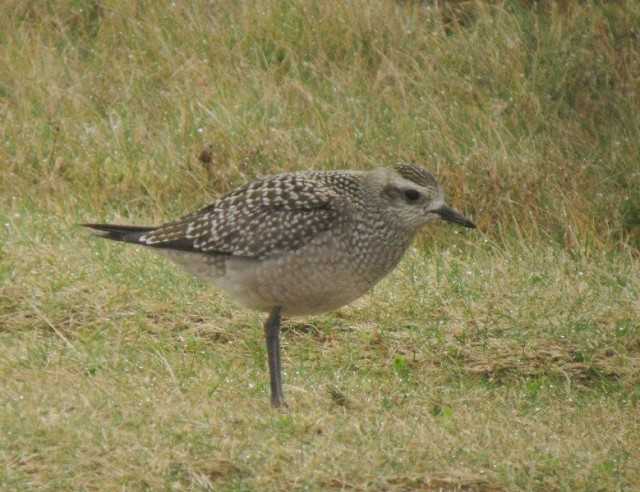
American Golden Plover, Truska, Galway (Photo: Dermot Breen)

American Golden Plover, Achill Island, Mayo (Photo: Derek Charles)
Apart from the Scilly bird, other Lesser Yellowlegs remained in Cornwall, at Drift Reservoir and Tresemple Pool all week. New arrivals were at Conder Green (Lancs) on 24th–28th and in Findhorn Bay (Moray & Nairn) on 25th, just the third for the county. Juvenile Spotted Sandpipers also remained on the Plym Estuary (Devon) to 28th and at Lydney (Glos) to 26th, with a moulting adult new in at Chew Valley Lake (Somerset) on 24th–28th. In Ireland, a juvenile was at Achill Island (Mayo) on 23rd, along with two Semipalmated Sandpipers.

Lesser Yellowlegs, St. Clement, Cornwall (Photo: John Rowe)

Spotted Sandpiper, Chew Valley Lake, Somerset & Bristol (Photo: Jeff Hazell)
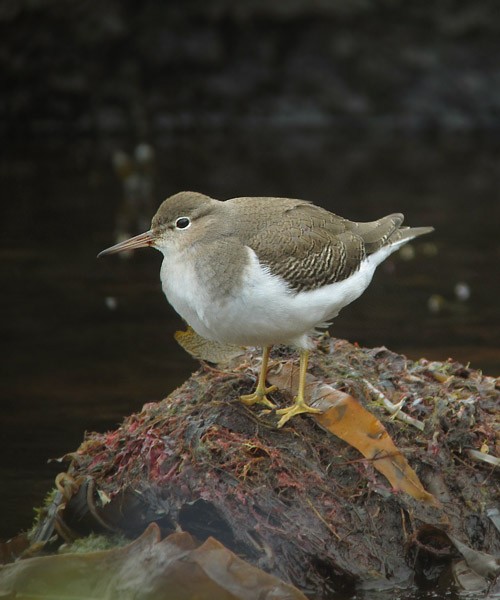
Spotted Sandpiper, Achill Island, Mayo (Photo: Josh Jones)
The Great Snipe was again on Fair Isle on 22nd; the island also boasted a Baird's Sandpiper, Citrine Wagtail, Melodious Warbler, two Barred Warblers, three Yellow-browed Warblers, Great Grey Shrike, Rose-coloured Starling, Little Bunting, just two Common Rosefinches and 34 Lapland Buntings.
The Long-billed Dowitcher remained at Stithians Reservoir (Cornwall) all week (along with a Pectoral Sandpiper); the juvenile Long-billed Dowitcher was also still at Baron's Haugh (Clyde) to 27th. The record year for Semipalmated Sandpiper continued unabated, with groups of birders visiting sites in western Ireland stumbling across small 'flocks' of birds at numerous sites in counties Mayo and Kerry. Four remained at Achill Island (Mayo) to 25th, and 'twos' were at Derrymore and Blennerville (Kerry), Corragaun Lough and Mulrany (Mayo), Tacumshin (Wexford) and Myroe Levels (Londonderry). One at Seafield (Clare) was also just the fourth county record. In the Outer Hebrides, one remained at Kilpheder, South Uist to 23rd and another was at Sgarasta Mhor, Harris on 25th–26th; elsewhere in Scotland, one was eventually confirmed on the Ythan Estuary (Aberdeenshire) on 27th–28th. In England, one remained at Slimbridge (Glos) to 27th; new birds were on the Axe Estuary (Devon) on 24th–28th and at Pennington Marshes (Hants) on 24th–27th, and the second for Kent was at Cliffe Pools on 25th.

Long-billed Dowitcher, Stithians Reservoir, Cornwall (Photo: John Rowe)

Semipalmated Sandpiper, Corragaun Lough, Mayo (Photo: Dermot Breen)
In Shetland, the Least Sandpiper remained on Foula to 23rd and there was another at Carrahane Strand (Kerry) on 26th–28th, the second for the county following one in August 1965. There was also a late record of a possible Least Sandpiper or Long-toed Stint photographed at Idle Valley NR (Notts) on 28th.

Least Sandpiper, Carrahane Strand, Kerry (Photo: Ed Carty)
Ireland's White-rumped Sandpipers remained at Rosslare (Wexford) to 25th, Lady's Island Lake (Wexford) to 28th and Trabeg (Kerry) to 26th, with two at Tacumshin (Wexford) during the week and new birds also at Barna (Galway) and Inch Island Lake (Donegal), both on 28th. Birds also remained on South Uist (Outer Hebrides) and Ythan Estuary (Aberdeenshire) with a new arrival at Hopeman (Moray & Nairn) on 23rd–24th. In Wales one remained at Llanrhidian Marsh (Glamorgan) and a brief bird was at Polgigga (Cornwall) on 23rd. Baird's Sandpipers also remained on St Agnes (Scilly) to 22nd, at Carrigart (Donegal) to 24th and on Achill Island (Mayo) to 25th, with further new birds on Fair Isle on 24th, Tiree (Argyll) on 26th–27th, Carrahane Strand (Kerry) on 27th and Saltholme (Cleveland) on 28th, the third record for the site.

Baird's Sandpiper, Achill Island, Mayo (Photo: Derek Charles)
Pectoral Sandpipers were again widespread. Birds at 35 sites across the country included inland birds in West Yorkshire, Nottinghamshire, Northamptonshire, Cambridgeshire, London and Berkshire. Notable groups included seven on Tresco (Scilly) on 26th, four at Cantley Beet Factory (Norfolk) all week and three at Truska (Galway) on 22nd. There were also still plenty of Buff-breasted Sandpipers at many sites, with perhaps as many as 60 birds involved, though the only inland birds were up to four at The Curragh (Kildare) on 24th–27th. By far the most notable group, though, was a record-breaking flock at Tacumshin (Wexford) — where else?! — which built to 23 by 25th, 26 on 26th and 28 on 27th, by far the largest recorded group in Europe.

Pectoral Sandpiper, Pugney's CP, West Yorkshire (Photo: James Thomas)
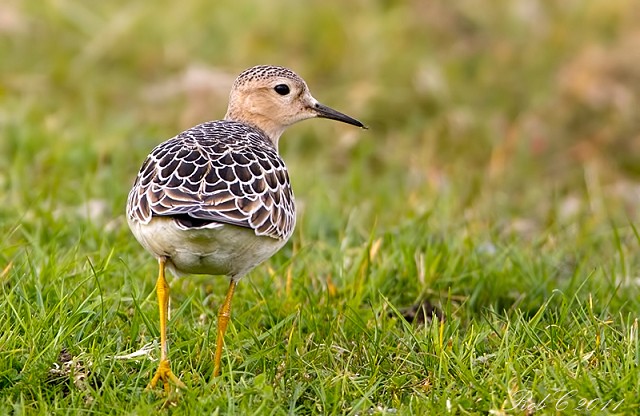
Buff-breasted Sandpiper, Davidstow Airfield, Cornwall (Photo: Rob Cross)
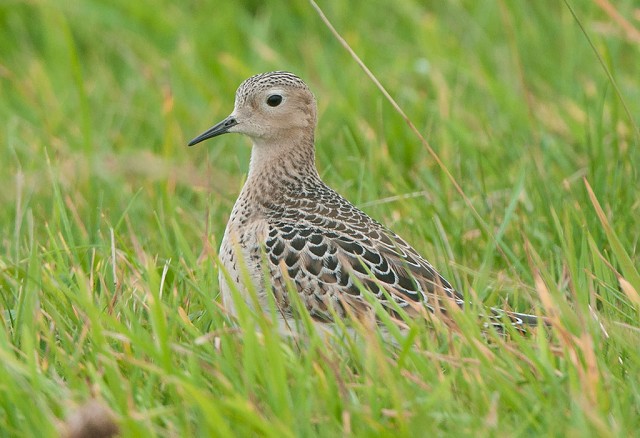
Buff-breasted Sandpiper, Thornwick Bay, East Yorkshire (Photo: Martin Standley)
It was no surprise to find the second-winter Glaucous Gull staying put at Dungeness (Kent), and other birds included a second-winter at Saltholme (Cleveland) on 22nd, one at Mablethorpe (Lincs) on 23rd and an adult at Nimmo's Pier (Galway) on 26th. One report of interest was a probable adult Azorean Yellow-legged Gull in the roost at Marston Vale Millennium Park (Beds) again to 26th. Both of last week's Ring-billed Gulls remained all week: the second-winter at Cardigan (Ceredigion) and the adult at Kinneil Lagoon (Forth). There was just one report of Bonaparte's Gull, the adult back at Blennerville (Kerry) on 26th.

Ring-billed Gull, Cardigan, Ceredigion (Photo: Paul Mahiques)
Two marsh terns were both brief, a White-winged Black Tern over Bull Island (Dublin) on 24th and a possible adult Whiskered Tern again in Regent's Park (London) on 24th–25th.
The Bee-eater stayed put on St Mary's (Scilly) and there was also a report of one on wires at Wimborne Minster (Devon) on 25th. The only Hoopoe was another Scottish bird, at North Berwick (Lothian) on 23rd. Most of the week's Wrynecks were along the south coast, with one at Hauxley (Northumberland) the furthest north. Notable inland birds were at Creekmouth (London) on 24th and Hoveringham Gravel Pits (Notts) on 26th.
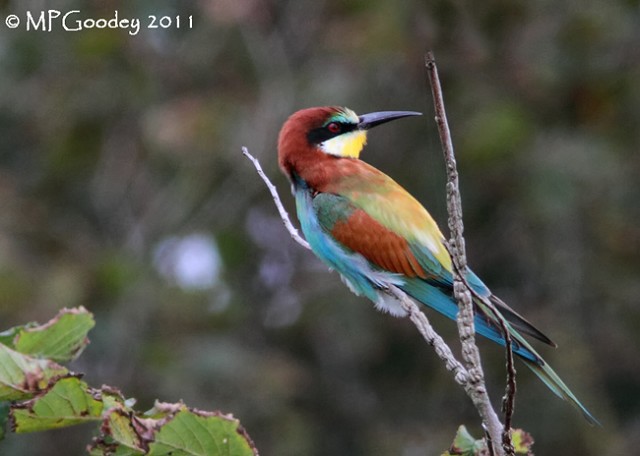
European Bee-eater, St. Mary's, Isles of Scilly (Photo: Martin Goodey)

Hoopoe, North Berwick, Lothian (Photo: Fiona Govan)
A Short-toed Lark was over Shuart (Kent) on 23rd and, apart from the northern birds already mentioned, the only other Citrine Wagtail was a possible first-winter at Cuckmere Haven (East Sussex) on 25th. Richard's Pipits 'shreep'-ed overhead at 10 sites; Tawny Pipits were at Angmering (West Sussex) and on Bryher (Scilly) on 23rd. There was also a single Red-throated Pipit heard with migrating Meadow Pipits at Noirmont Point (Jersey) on 28th.
Apart from Red-backed Shrikes at Evie (Orkney) and Grutness (Shetland), all others were in the south, including one still at Frinton-on-Sea (Essex) all week and new birds at Herne Bay (Kent) on 22nd–24th, Lodmoor (Dorset) on 24th–28th, Sharkham Point (Devon) on 26th and Sennen (Cornwall) on 28th. On Scilly, one remained on Tresco and another was on St Agnes on 24th. A Lesser Grey Shrike at Laxo (Shetland) on 25th–28th was notable, and the only Great Grey Shrikes was on Fair Isle on 24th. There was also just one Woodchat Shrike, which remained on St Mary's (Scilly) all week. Both of the week's Bluethroats were on Shetland, at Quendale on 25th and Northdale, Unst on 27th.

Red-backed Shrike, Frinton-on-Sea, Essex (Photo: Mark Coventry)

Lesser Grey Shrike, Laxo, Mainland, Shetland (Photo: Ashley Powell)
On Scilly, another or the same Aquatic Warbler was again on Great Pool, Tresco on 28th. The autumn run of Blyth's Reed Warblers continued, with birds remaining on Tiree (Argyll) to 26th and Glanfahan (Kerry) to 22nd. One was then ringed at Portland Bird Observatory (Dorset) on 27th, the fifth for the county (all of which have been ringed at the Obs). All the week's Melodious Warblers were predictably in the southwest: one in the Nanquidno Valley (Cornwall) on 24th and two on the Isles of Scilly, on St Mary's on 25th and St Agnes on 26th. The island also saw an elusive Icterine Warbler on St Mary's on 26th, and others were at Lowestoft (Suffolk) on 25th, on the Farne Islands (Northumberland) on 25th–26th, at Caister-on-Sea (Norfolk) on 27th and at Minsmere (Suffolk) on 28th.
There was a further arrival of Yellow-browed Warblers during the week, mostly birds in the Northern and Western Isles, including five at Quendale (Shetland) on 23rd. The only southern birds were one again at Blacksod (Mayo) on 24th, one reported in a garden at St Ives (Cornwall) on 27th and one on Blakeney Point (Norfolk) on 28th. An Arctic Warbler at Burnham Overy (Norfolk) on 24th was popular if brief. Barred Warblers were also mostly in the Northern and Western Isles, with others on Cape Clear (Cork) on 25th, at Slyne Head (Galway) on 27th, at Holme Dunes (Norfolk) on 28th and, most unusually, one in East India Dock Basin (London) on 26th. There was also a probable Booted Warbler at Wester Quarff (Shetland) on 28th, though Sykes's Warbler had yet to be ruled out. Further Red-breasted Flycatchers were at Eswick (Shetland) on 26th and Skomer (Pembrokeshire) on 28th and another was reported from Polgigga (Cornwall) on 24th.

Arctic Warbler, Burnham Overy, Norfolk (Photo: Penny Clarke)
The Ortolan Bunting remained on St Mary's (Scilly) to 27th, and another was in the Cot Valley (Cornwall) on 26th. In the east, one was ringed at Spurn (East Yorks) on 24th and in Ireland one was at Quilty (Clare) on 27th. Lapland Buntings were still recorded along all coasts during the week, with good numbers in Scotland and single figures further south. A Little Bunting was also a nice find in a mist-net at Low Newton-by-the-Sea (Northumberland) on 25th; the only others were on Shetland, on Fetlar on 25th and Whalsay on 25th–28th. Also on Shetland, a juvenile Black-headed Bunting was at Belmont, Unst on 28th. A Red-eyed Vireo at Brevig, Barra (Outer Hebrides) on 22nd–28th was also ringed and the Scilly bird also remained as previously mentioned.

Little Bunting, Whalsay, Shetland (Photo: Ashley Powell)
The only Serin was in flight at Eglwys Nunydd Reservoir (Glamorgan) on 25th. Away from the Northern and Western Isles, southern Common Rosefinches were pretty much all encountered on 24th, at Ballycotton (Cork), St Agnes (Scilly), Hope Point (Kent) and two on Tory Island (Donegal). The only outlier was one on St Agnes (Scilly) on 28th. All the week's Rose-coloured Starlings were new in, namely birds at Dungeness (Kent) on 23rd, Land's End (Cornwall) on 23rd–28th, Fair Isle on 25th–26th, Fidden, Mull (Argyll) on 26th and St Agnes (Scilly) on 27th. The autumn's first Coues' Arctic Redpoll was at Urafirth (Shetland) on 25th–28th.
Photo of the Week: 22nd–28th September

Sandhill Crane, St. Combs, Aberdeenshire (Photo: Joseph Nichols)
Bird photography is not something normally associated with people in their teen years, so it's always refreshing to see photo submissions from our younger contributors. Aberdeen-based Joseph Nichols is only 17 years old, but has already been sending us his bird photos for over a year. Even more impressively, he has been documenting his birding exploits in detail on his blog for even longer, showing a real passion for birds. Although Joseph doesn't regard himself as a twitcher, the presence of a Sandhill Crane not too far away from home understandably saw him paying a visit. This stunning bird was viewable mainly at a distance but, no doubt to Joseph's amazement, it decided to fly right past his head! Keeping his composure, Joseph managed to capture a sharp close-up of the sunlit bird against a rich blue sky. Although he didn't get the full bird in the shot, Joseph managed to create an interesting composition, with the bird positioned along two sides of a square crop. Let's hope there's a new generation of bird photography talent waiting to show us what they can do!
Other notable photos

Sparrowhawk and Greenfinch, Leighton Moss RSPB, Lancashire (Photo: Martin Till)

Common Kingfisher, undisclosed site, Kent (Photo: Tonyf)

Pallid Harrier, Burpham, West Sussex (Photo: Richard Ford)
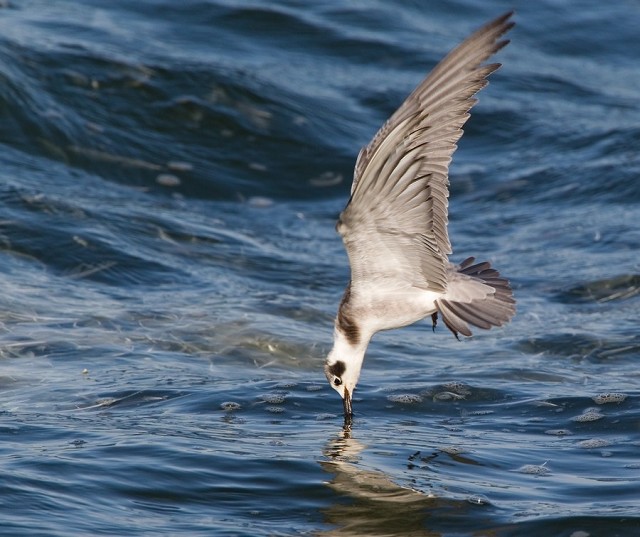
American Black Tern, Covenham Reservoir, Lincolnshire (Photo: Don Davis)

Grey Phalarope, Eastbourne, East Sussex (Photo: Will Rawles)
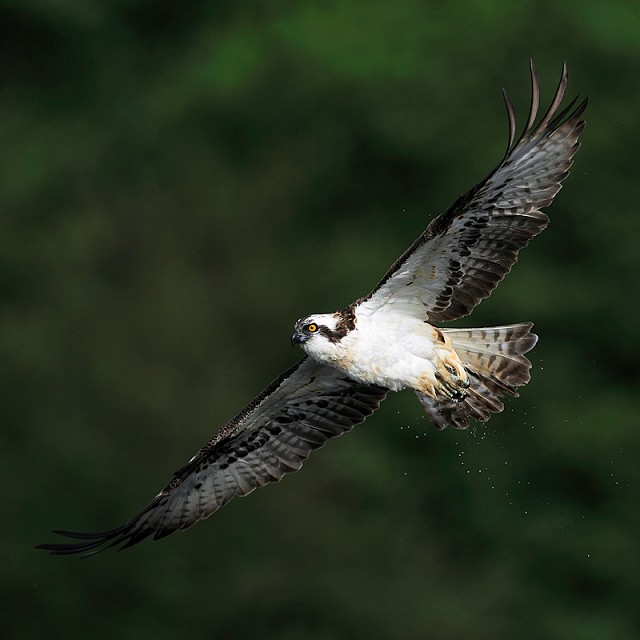
Osprey, Rothiemurchus, Highland (Photo: Nigel Forrow)

Barn Owl, La Claire Mare, Guernsey (Photo: Chris Bale)

Buff-breasted Sandpiper, Rimac, Lincolnshire (Photo: Dean Eades)

Grey Plover, Titchwell RSPB, Norfolk (Photo: Peter Walkden)

Little Owl, undisclosed site, Leicestershire and Rutland (Photo: Paul Riddle)
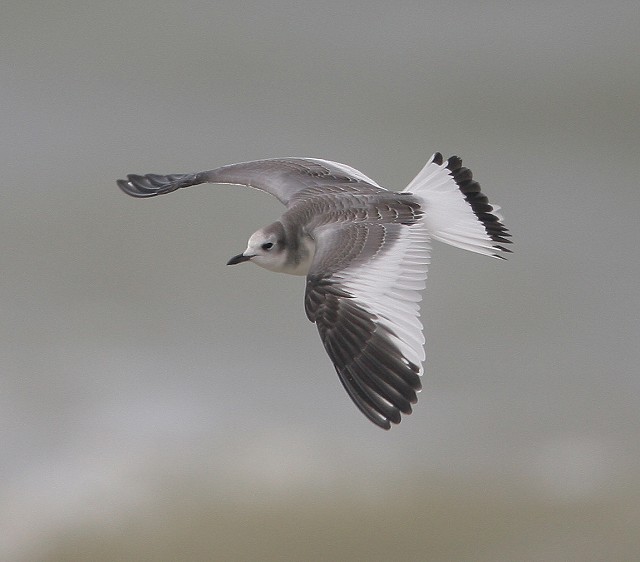
Sabine's Gull, Newhaven, East Sussex (Photo: Dorian Mason)

Turnstone, Ballintoy, Antrim (Photo: Ian Dickey)

Peregrine Falcon, Langness, Isle of Man (Photo: Pete Hadfield)

Green Woodpecker, Minsmere RSPB, Suffolk (Photo: Dave Martin)

Swallow, Cley Marshes NWT, Norfolk (Photo: Graham Brownlow)

Bar-tailed Godwit and Black-headed Gull, Belfast Lough, Antrim (Photo: Danny Boyd)

